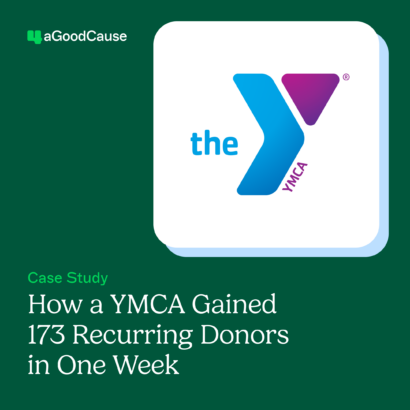Is anyone else amazed when they look back at the history of the telephone? We’ve had everything from the old wooden crank phones to rotate and release rotary phones. We felt pretty good when the first commercially available mobile phone weighed in at almost 2 pounds 30 years ago. Today, life revolves around the smartphone, with nearly two-thirds of all Americans owning one, and for many, the mobile device has become the primary means of accessing online information.
As mobile device usage continues to grow, nonprofits are incorporating mobile strategies into their marketing and fundraising plans now more than ever. However, there is no tried-and-true mobile marketing strategy out there – organizations have had to learn from their own errors and the errors of those who have gone before them.
I’ve done some of the legwork for you. Here are a list of the top 5 mobile marketing mistakes that companies are making and how your nonprofit can learn from them as you implement your mobile strategy:
1. Their site is not mobile-friendly.
You sent out some great mobile texts and e-mails with links to your website asking for donations or updating donors about upcoming events, but before you did that, did you make sure your site is mobile-friendly? An astounding 84% of nonprofit donation landing pages are not optimized for mobile. You can’t very well start up a mobile campaign that sends your users to a non-mobile web page. Not only will an “unfriendly” site turn away users, but Google also announced that they will promote smartphone-recommended websites above those that are not.
What you can do:
Update your website so it’s mobile friendly. Test your site across all devices by having your web developer use real devices, emulators and other online tools. In addition, do not forget to optimize for “ultramobiles” as well, which are expected to grow as much as 54% after 2014. Ultramobiles include tablets, hybrids and clamshells. This is why responsive websites are the way to go!
2. They build a great app or website, but they don’t promote it.
As of May 2015, there were around 1.4 million apps available in the leading app stores. You built a great app or launched a brand new, responsive website, but do your donors or potential donors know it exists? When you create a budget for app development and responsive website programming, include additional funding and strategy planning for promotion and roll-out.
What you can do:
There are many creative ways to promote your website and mobile app. Include information about your mobile app in your with a list of benefits of using it. Share the link to your mobile site on your social media channels. Tell donors the benefits of signing up for your e-newsletter or SMS program and how that information will lead them to custom areas on your new website.
3. They lack a clear call-to-action.
It’s important to make it easy for your constituents to know the purpose of your mobile marketing with a call-to-action. Provide and describe the incentive of their immediate response.
What you can do:
Understand your campaign goals and create a call-to-action with incentives accordingly. Your call-to-action should be easily visible in your mobile marketing campaign and should be simple to read and understand. Be direct and create a sense of urgency, but relay the value of taking the next step to your audience. Be sure the end result takes them to a responsive landing page—whether it’s your home page, your donation page or another area on your site.
4. They forget the original purpose of the phone.
It is important to send your audience back to your website, but many forget the power of a phone call. People still appreciate the personal touch and connection of a phone call. Especially when it comes to nonprofits, your audiences crave to hear your message—they want to hear from the people whose lives you’ve touched, how you’ve made a difference, or where their donation money goes.
What you can do:
Include your phone number in all e-mails, texts and online sources, and have a live person ready to answer calls and questions at your organization. Provide options for automated responses (in terms of donations via phone) or an option to easily speak to a live person. Provide options for all types of audiences.
5. They take privacy concerns lightly.
Personal privacy and online security are becoming bigger concerns for many. Your mobile marketing technologies and campaigns should be following industry regulations when securing customer’s information. Be sure to include opt-out messages in your text message (SMS) campaigns, provide opt-in (and opt-out) options when building your contact lists, and be truthful about what you do with donor information.
What you can do:
You should always ask donors for permission to collect their information and data online. In addition, providing links to your organization’s privacy policy online and in e-mails helps ensure security to your audience.
According to Guidestar, 2014 was the tipping point for more Web traffic coming from mobile devices than desktop computers. This trend has not only continued, but increased, into 2015. Your nonprofit needs to be ready. Don’t quite know where to start? We would love to help!



